The Corsair H80i GT and H100i GTX AIO Coolers Review
by E. Fylladitakis on November 16, 2015 8:00 AM EST- Posted in
- Cases/Cooling/PSUs
- Corsair
- Liquid Cooling
- Corsair Link
The Corsair H80i GT and H100i GTX
Both the H80i GT and the H100i GTX are based on the common configuration of a radiator, two hoses and one block that combines the CPU contact plate and the pump. The H80i GT is designed to take a single 120 mm slot while the H100i GTX requires two adjacent 120 mm slots. For both of these liquid coolers, Corsair ditched the standard thin corrugated/rubber tubing and is using thick braided tubes instead. The internal diameter of these tubes is not really larger, but they are more resistant to kinks and have significantly greater mechanical strength.
The main (and virtually only) physical difference between the H80i GT and the H100i GTX is the radiator. Both radiators are based on the same core design, a dual pass cross-flow configuration with wavy fins attached to the thin oblong tubes. The H100i GTX has a 276 mm long radiator that is 30 mm thick and can hold two 120 mm fans on either of its sides. The radiator of the H80i GT is 154 mm long and capable of holding one 120 mm on either of its sides, but it also is 49 mm thick, making up some of the lost mass. The thickness however increases the airflow impedance of the radiator significantly, which is why Corsair is supplying two 120 mm fans with the H80i GT to be used in a push-pull configuration, in order to maintain practical pressure and airflow levels. The 30 mm radiator of the H100i GTX has significantly lower airflow impedance and thus a push-pull configuration would not have a significant effect, particularly considering the already high pressure of the supplied SP120L fans.
Both of the coolers we review today share the same pump/block assembly. It is mostly made out of plastic, with an octagonal piano black top and a circular base. A grey cover with a semi-transparent company logo can be seen at the top. RGB LED lighting is installed beneath this cover, illuminating the company logo along with the top and the bottom side of the grey cover.
The copper contact plate is attached to the circular base of the block with eight screws. Thermal material is pre-applied to it and it comes with the Intel CPU mounting retention bracket from the factory. A retention bracket for AMD CPUs is included in the box.
One of the most important features of these two coolers is the Corsair Link support. By attaching the provided USB cable to an internal header on the motherboard (or to the Corsair Link Commander, if one is available), the user has direct control over almost everything regarding the coolers. The LED color can be changed manually or can be linked to a temperature, the speed of the pump and the cooling fans can be configured and custom cooling schemes can be programmed as well. The speed of the pump or fans can be set to one of the pre-programmed modes (e.g. Quiet, Performance, etc.), to a fixed speed or a custom cooling curve can be manually created.


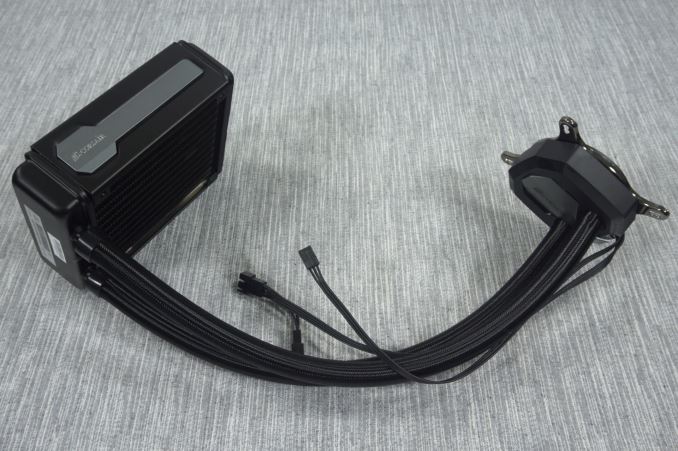
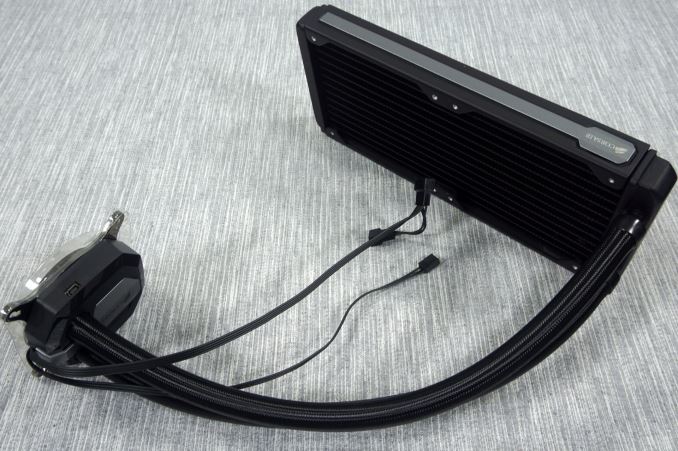
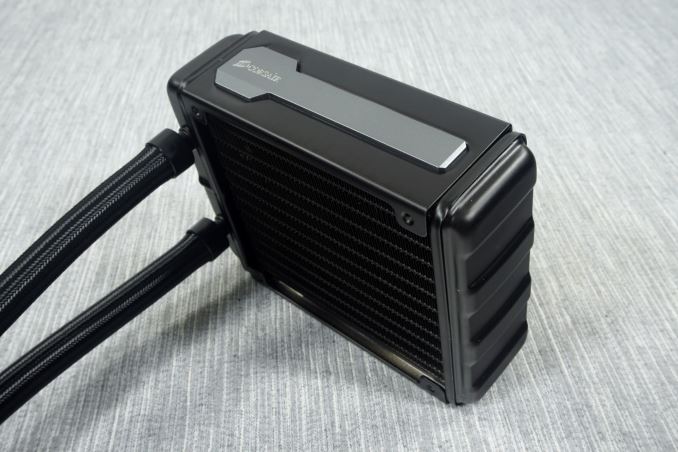
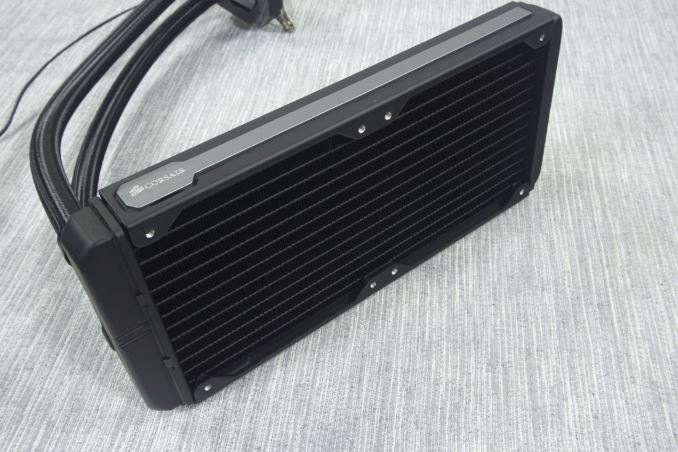
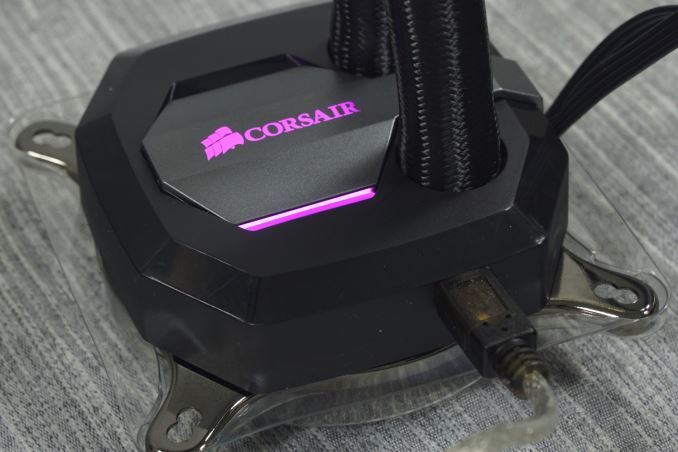
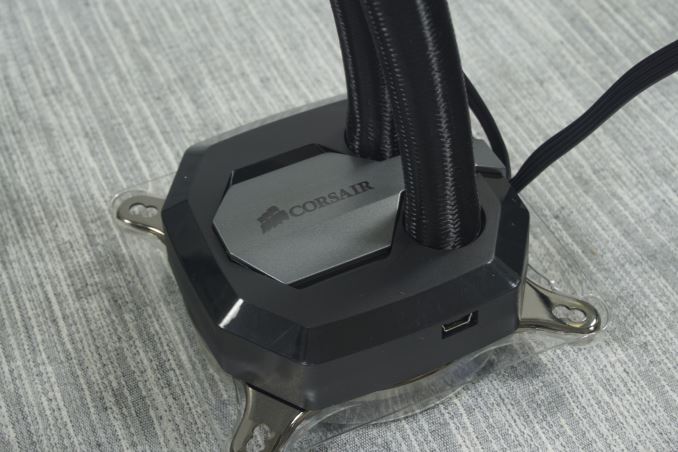

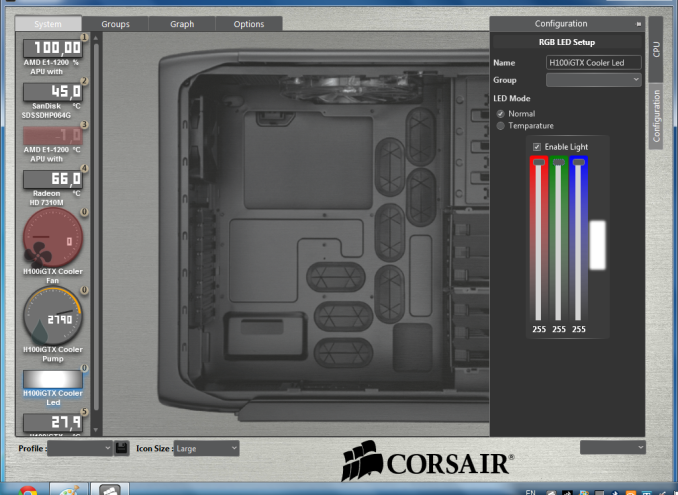
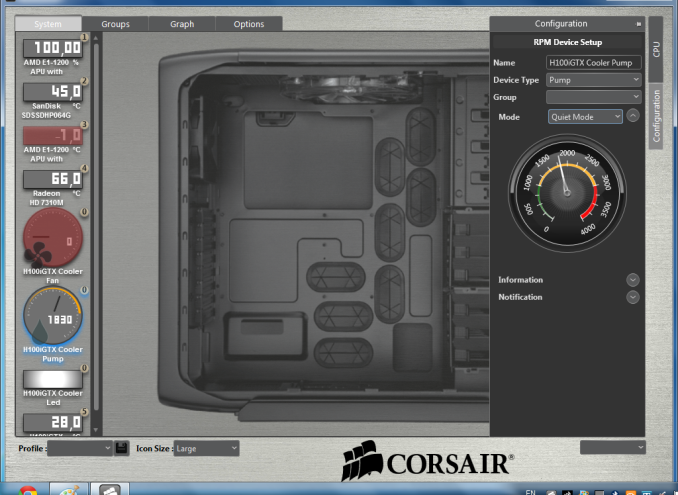
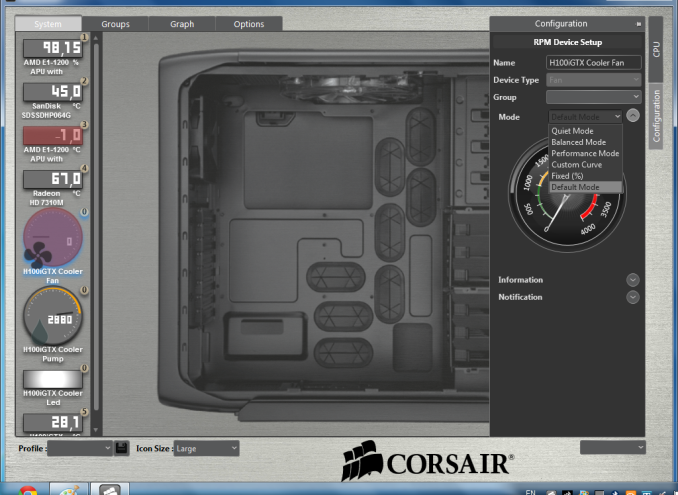








47 Comments
View All Comments
Beararam - Wednesday, November 18, 2015 - link
Oh, I never doubted your honesty about the numbers you're getting from realtemp, or aida, or whatever. It doesn't matter what they tell you though; if you're getting below ambient on an AIO or air cooler... it's wrong, because the medium you are cooling with is the air in that room.weewoo87 - Thursday, September 15, 2016 - link
Is your PC on the floor next to your AC vent? The air coming out of your AC vent will be cooler than ambient.xthetenth - Monday, November 16, 2015 - link
Good review, but I'd really like to see two things. First if you could pick a good noise level for use without headphones and normalize to that if possible for the product so we could see what lowering some of the more aggressively tuned coolers to a level that's bearable to listen to. Second, I'd love to see whether or not the coolers can be set to an inaudible or at least very quiet idle setting, and if so how much heat they can dissipate effectively in that setting.Adding those and mixing in some air coolers (probably one or two of the high end kilo of metal hanging off your socket coolers, and a stock cooler and 212 as a baseline) would make the reviews fantastic and a source for all the information I'd want when looking at coolers.
rhysiam - Monday, November 16, 2015 - link
+1 for the first request... pick a nice acceptable target level in dBA and a fairly average OC'd CPU thermal load and see what temps the coolers can manage. The chart topping temps for these coolers are completely irrelevant for the overwhelming majority of users because of the noise levels. I suspect most coolers would produce impressive temps if they have a jet engine pushing air through them.I realise it's not a perfect comparison, dBA is not a perfect measure of how intrusive the noise levels are, and no doubt people would quibble over whatever dBA and wattage you decided on. BUT, sometimes you just want a quick chart that gives a reasonably accurate reflection of performance under relatively "normal" enthusiast workloads, and temps over ambient at a fixed dBA & wattage would give you that.
To the author - I really appreciate your scientific approach. Thanks for the article and I look forward to seeing the comparison with the high Noctua's in future too.
thekdub - Monday, November 16, 2015 - link
Is 1400RPM the lowest these coolers will get using the Corsair Link software? My H100i idles at ~900RPM using a Swiftech PWM hub and is not only inaudible from ~2-2.5 feet away, but also maintains sub-30*C idle temps in a 23*C room with a 4970k. Even at load, the cooler is inaudible (or at least not noticeable) while wearing a pair of open-back headphones.If these new coolers are indeed quieter than the preceding H100i/H80i, then "quiet but tolerable" seems like it is selling them short. You can make these things silent with a custom fan curve and still achieve adequate cooling.
As a side note, I do think the older H100i/H80i have a much more sleek and attractive appearance. The two-tone grey/black on these new ones looks plasticky and cheap.
nmm - Monday, November 16, 2015 - link
Such a pity the H110i GTX wasn't in the mix, while you were at it. That really seems like the one worth looking at for anyone who has room for it. Let's face it, if you are in the market for this much cooling, you're probably in the market for as much as you can get for the least noise, which is the H110i GTX.Still, after seeing the figures and description of the H100i GTX pump noise I'm more comfortable sticking with big air for my next build.
Awful - Monday, November 16, 2015 - link
Still using my original H100 on i2500K @ 4.8GHz. Still see no good reason to upgrade either. Nice!lorribot - Monday, November 16, 2015 - link
There are a couple of real world tests that seems to be missing but may actually be quite useful, firstly cooling performance at a given noise level say 35/40/45db rather than at a given voltage or or how noisy is a system to maintain a 200w load at a say a temperature of 80C.mobutu - Tuesday, November 17, 2015 - link
www.silentpcreview.com constant ambient conditions during their testing are 10~11 dBA and 21~23°C.Anything above 20 dBA is rightfully considered loud.
You need to learn your lesson and stop bullshitting with the following laughable arguments, cause you clearly don't know what inaudible and loud really means:
- "The noise floor of our recording equipment is 30.2-30.4 dB(A), which represents a medium-sized room without any active noise sources.";
- "<35dB(A) = Virtually inaudible";
- "35-38dB(A) = Very quiet";
- "38-40dB(A) = Quiet".
HollyDOL - Tuesday, November 17, 2015 - link
Please review your lessons of physics or at least use google before you start accusations, one of many: http://www.cdc.gov/ncbddd/hearingloss/sound.html